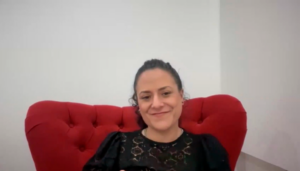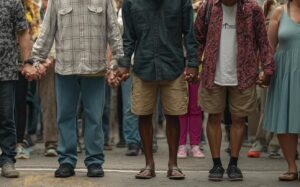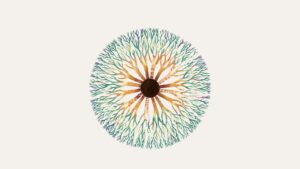Sarah Russo | 2 August 2023
Mushrooms have played a significant role throughout history, serving as both food and medicine while also facilitating profound journeys of consciousness. Currently, there is a growing global interest in psilocybin, an active compound found in various psychoactive mushroom species. Psilocybin-containing mushrooms are being investigated for their potential for addressing various mental health challenges such as depression, addictions, PTSD, and facing terminal illnesses. These research efforts are supporting a new era of exploration on the medicinal and transformative capacities of the fungi kingdom.
But just like psilocybin is not the whole picture of “magic mushrooms” we still have very far to go when it comes to understanding how these fungi can influence the vast array of the human experience. The psychedelic sphere needs to address disparities in research, particularly the historical underrepresentation of women and People of Color in studies. It is crucial to include diverse demographics to ensure research reflects the diversity of the world we live in. For example, there are indications that psilocybin-containing mushrooms may be beneficial for women-specific conditions like menstrual difficulties, PMS, endometriosis, hormonal issues, and sexual dysfunction.
In an effort to shine more light on the current landscape of research on psilocybin mushrooms from a woman’s perspective, Sarah Russo of ICEERS chatted with Jennifer Chesak, a medical journalist and fact-checker who recently published the book The Psilocybin Handbook for Women: How Magic Mushrooms, Psychedelic Therapy, and Microdosing Can Benefit Your Mental, Physical, and Spiritual Health. Jennifer discusses the potential differences in the effects of mushrooms on women, important considerations, and available scientific research and anecdotal evidence.
What are some of the main research areas that are lacking on women and mushrooms?
We need to be studying how psilocybin and other psychedelics affect the menstrual cycle. We do see some research coming out now, mostly case studies and anecdotal reports, which are also important. There is preliminary evidence that psilocybin may affect the menstrual cycle by making someone’s period come early or helping to re-regulate a dysregulated cycle. The mechanisms make sense because the hypothalamic-pituitary-gonadal axis controls our menstrual cycle. It’s a feedback loop where one hormone kicks off and sets off another hormone that creates the trajectory of the menstrual cycle. The hypothalamic-pituitary-adrenal axis (HPA) controls our stress response. Psilocybin binds to serotonin receptors and activates the HPA axis. And the menstrual cycle axis and the stress response cycle overlap. I would love for researchers to dig into how these axes are affecting each other, specifically during and after a psilocybin journey.
We need to be studying psilocybin in the context of pregnancy and breastfeeding. Of course, we don’t do clinical trials on pregnant people or on children being breastfed. But I would love to see more retrospective studies on what we know so far. We need to lean into Indigenous wisdom because they have been using psilocybin in these contexts for centuries. Some anthropologists have dug into that. But I would love to see that pulled together in a way that provides people with nuanced information. I incorporated some information in the book focused on what we know so far about pregnancy and psilocybin. We don’t have evidence of harm, but we also don’t have evidence of complete safety.
There’s an example in the book of a woman who is a self-described alcoholic. She used psilocybin to abstain from alcohol during her pregnancy. In that case, I feel that is a time that makes sense when someone is using psilocybin, a traditionally safe substance while trying to avoid alcohol. We have tons of research on fetal alcohol syndrome. This is why we need this nuanced information.
I would love to see more information about psilocybin to help with menopausal symptoms. A huge symptom of menopause is depression. It can crop up for people who’ve never had it before. There’s probably some usefulness to using psilocybin to treat depression in menopause, but there may be other benefits as well.
Based on your research, what are some of the main ways that a mushroom experience differs for women?
We know the female hormone estrogen affects binding at the receptor sites for serotonin. I think that can create some differences for women. There are some early studies that suggest that women are more prone to having difficult journeys. That could be related to female hormones and where people are on the menstrual cycle. Or it could be having to do with our lived experiences as well, which are very different from men. Women are disproportionately affected by trauma, chronic pain, etc. We don’t have very specific studies yet to showcase all of these potential differences. But I would love for researchers to lean into that.
In many cases, women are using psychedelics more frequently than men. This came out in the Global Drug Survey. When you dig a little deeper into how people are using these substances, women are using psychedelics to self-treat chronic pain, mental health issues, and trauma-related conditions like PTSD. Men tend to use psilocybin and other psychedelics in a more recreational context.
When we look at the history of how women have been treated in the medical community, the female body is often the last to be studied. Women were excluded largely from early-stage clinical trials until the 1990s. That has had some pretty dramatic ramifications. I can see why women are using psychedelics to self-treat. It’s because the mainstream medical community has left us in a lurch to figure out our treatments for ourselves. That’s so frustrating.
Women are more likely to be gaslit at the doctor’s office, and their pain is more often discounted as well. It’s a shame that the medical community has left us behind. I don’t blame women for seeking out alternative options. I think psilocybin is showcasing itself as a pretty good alternative option for many things.
What are some unique ways that psilocybin mushrooms can offer healing in comparison to traditional medications often prescribed for women’s health conditions?
I feel like they could benefit almost every condition out there that disproportionately affects women or is unique to the female body. People throw selective serotonin reuptake inhibitors (SSRIs), or antidepressants, at different conditions. That’s true for endometriosis, polycystic ovary syndrome, menopause symptoms, and more. It would be nice to see comparisons of how psilocybin affects or helps these conditions and compare psilocybin with SSRIs.
One expert I talked to said that when we take an SSRI, it blunts our mood and our highs and lows as well. But when you take psilocybin, instead of blunting the highs and lows, you actually end up feeling more okay with your ups and downs. We shouldn’t be necessarily blunting our highs and lows. I don’t have anything against SSRIs. And I certainly don’t want people to stop taking their medications. That should be a conversation with your doctor. But we do have other methods of helping with depression and mood. Psilocybin may have a lot of potential there.
There are different dosages and protocols. There are large doses where you’re tripping and having visuals. And then there are microdoses, which people take at regular intervals to see how that affects them. It is such a small amount that you don’t have visuals. It may just take the edge off your day. It depends on the condition and how you might go about using psilocybin. For many conditions, I think that a deeper journey might be beneficial. I go through all of these conditions in Chapter 11 and showcase what research we have so far. Microdosing could also be beneficial to take regularly at specific intervals and then take a break from it.
An Indigenous wisdom expert I spoke to recommended microdosing over three months to see how it affects your symptoms or your cycle by journaling about it or keeping a symptom log. That’s because if you just do it for a bit of time with one cycle, you wouldn’t really know. Then she suggested seeing how a journey affects your menstrual cycle.
If you’re thinking about doing a deeper journey, she recommended doing it near your ovulation time rather than closer to your period. A lot of Indigenous cultures don’t allow people to journey when they are on their menstrual cycle. As we get closer to our periods, our bodies give all that energy to the potential embryo. Oftentimes when people do a deeper journey, they will fast a little, whether that’s a few hours before or even a few days. You will have a much harder time doing that closer to your menstrual cycle because you become more insulin resistant during that time. That can drive cravings. When we’re closer to ovulation, we have more energy in our bodies.
Can you speak to the importance of honoring and supporting the communities who have historically been the knowledge carriers of psilocybin-containing mushrooms in their lineages?
I interviewed Natalie Villanova, a licensed social worker when I was doing research for the book. She was talking about the concept of Two-eyed Seeing. It was brought to Western mainstream science by Albert Marshall, a Mi’kmaq elder. It means merging current Western science with the concepts of Indigenous wisdom. Both matter in this space so much.
In Western science, we often think about doing something over and over again to reproduce the same results, either in clinical trials or preliminary studies. That is what Indigenous people have done for centuries in terms of using psilocybin. And so they have reproduced results. And these substances were originally used by Indigenous people. So we don’t want to be culturally appropriating them, but that doesn’t mean that we can’t use them. We should be leaning into the Indigenous wisdom that has been around for ages. Psilocybin produces mystical experiences. That wisdom is important rather than making these substances very clinical. It benefits everyone so much more when we’re bridging both Western science and Indigenous wisdom together.
We see this a lot in how people are doing their journeys with set and setting. A lot of times we want to bring in that Indigenous wisdom for a ceremonial aspect to help ease you into your psilocybin experience. How do we avoid discounting Indigenous wisdom? Or how should we lean into that more? If people are going on retreats, they should be very conscious of the Indigenous practices of the culture they are visiting, especially when it comes to using psilocybin or another psychedelic.
I know that a lot of scientists working with patients in a clinical trial are trying to bring in elements of ceremony. That’s a good thing. With psychedelics, the idea of set and setting is so important. If somebody is going into a clinical trial to see how psilocybin affects depression, you want to make that space very safe and feel almost like a natural environment rather than being in a clinical room. Multiple things could help create a good set and setting that leans into cultures with Indigenous wisdom.
How can women in particular build greater safety when working with mushrooms and be informed on consent?
That’s a great question and a difficult topic. There are allegations of sexual assault happening in psychedelic sessions, whether with an underground guide, a shaman, or a psychedelic-assisted therapist. It’s been happening in different contexts. It’s important that people are aware that consent is very complicated when you’re in an altered state. When we’re on psychedelics, especially psilocybin, we tend to feel well. We are putting ourselves in a very vulnerable state. That’s because our minds are becoming more entropic and flexible. But also, we’re more susceptible to being convinced to do something that we wouldn’t normally want to do. It’s important to make people aware of that when they’re going on a journey.
Women are disproportionately affected by sexual assault. But I also want to make it clear that it’s underreported for men. I talked to Natalie Villanova who is studying the idea of consent, and how we can incorporate these safety frameworks around psilocybin or psychedelic sessions in general. She said something that really resonated with me: we need to be having these conversations about consent before we go into a journey with a practitioner. They should be having a conversation about consent with you. And if they don’t, that’s a red flag. That doesn’t mean that that person is going to sexually assault you. But it means they’re not thinking about it. And they should.
That conversation could involve talking about types of touch that might occur during a psilocybin session. Touch can be completely off the table if you are uncomfortable with it altogether. I want to make people aware of that. But the conversation about touch or consent needs to happen before you’re using psilocybin in the session. It should ideally happen at a separate time. Someone could say, “If something difficult comes up for you during your session, is it okay for me to hold your hand?” That’s the kind of talk that should be happening. When you’re actually in the session, the practitioner needs to honor that conversation that you had before. If you said no to handholding, they can’t say, “I’m going to hold your hand.” If you said, “I think handholding would be totally fine,” that person still needs to ask you again when you are in the session to double-check that consent.
The other thing that Natalie Villanova said that really resonated with me was you can say no to anything you previously consented to. But in your session, you cannot consent to something that you didn’t consent to before. That’s because when you’re in that altered state of consciousness, the consent isn’t really there anymore. You can’t reverse it. You can say no to anything you already agreed to, but you can’t agree to something that you said no to before. Sex should be completely off the table in a psilocybin session with a practitioner, at a retreat, or anything like that. If you’re with your own partner, you two can have that conversation about consent beforehand.
In terms of how we make ourselves feel safer, the onus of consent really is on the practitioner. However, we all have to think about consent because it’s an issue. You can talk to people about it beforehand, such as with your friends or whoever else you’re considering doing a psilocybin journey. Find a practitioner they trust. I think it’s important to look up reviews about the people that you might be working with and do a lot of research before you agree to move forward.
Dr. Lily Kay Ross, one of the hosts of the Cover Story: Power Trip podcast, digs into this topic in-depth on what is happening occasionally in psilocybin or in psychedelic sessions in general around breaking consent. That’s not happening in every session, but it is an issue. She dives into that and interviews people it has happened to. I think it’s a great podcast to gain awareness about the issue.
In Conclusion
As the world’s fascination with mushrooms continues to grow, the spotlight on psilocybin intensifies. However, psilocybin is only one part of the world of “magic mushrooms” and there is still a vast amount of information that is waiting to be uncovered. Through this search, it is vital that the psychedelic community address historical research disparities and ensure inclusivity and representation of women and People of Color to accurately reflect the diversity of the human experience. It is only through comprehensive understanding centered on social justice that fungal allies can truly amplify our greatest potential.



